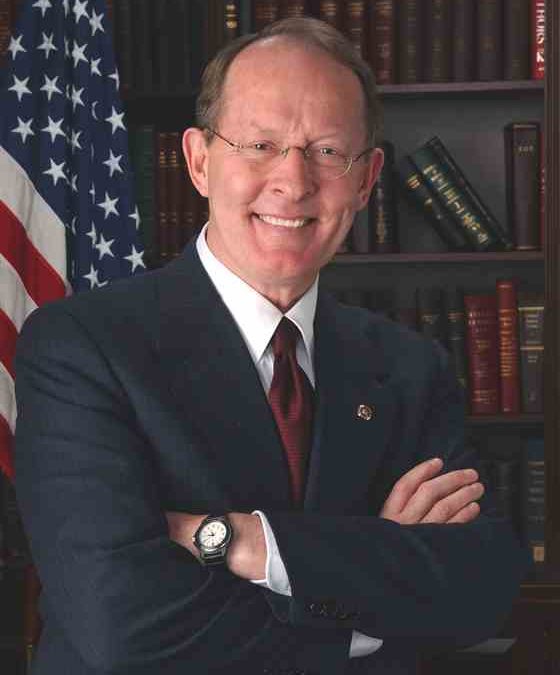
by NNPA ESSA | Jun 18, 2017 | Alabama, Alaska, Arizona, Arkansas, California, Connecticut, Delaware, District of Columbia, ESSA, Every Student Succeeds Act, Every Student Succeeds Act (ESSA), Florida, Georgia, Hawaii, Idaho, Illinois, Indiana, Iowa, K12 Education, Kentucky, Louisiana, Maryland, Massachusetts, Michigan, Minnesota, Mississippi, Missouri, National, Nebraska, Nevada, New Hampshire, New Jersey, New Mexico, New York, North Carolina, North Dakota, Ohio, Oklahoma, Oregon, Pennsylvania, South Carolina, South Dakota, Tennessee, Texas, Utah, Vermont, Virginia, Washington, West Virginia, Wisconsin, Wyoming
Emily Parker, Bruce Atchison and Emily Workman
Education Commission of the States
This report highlights significant investments made by both Republican and Democratic policymakers in state-funded pre-k programs for the fourth year in a row. In the 2015-16 budget year, 32 states and the District of Columbia raised funding levels of pre-k programs. This increased support for preschool funding came from both sides of the aisle–22 states with Republican governors and 10 states with Democratic governors, plus the District of Columbia.
In contrast, only five states with Republican governors and three states with Democratic governors decreased their pre-k funding.
Overall, state funding of pre-k programs across the 50 states and the District of Columbia increased by nearly $755 million, or 12 percent over 2014-15. While this progress is promising, there is still work to be done to set children on the path to academic success early in life. Still, less than half of preschool-aged students have access to pre-k programs.
Increasing the number of students in high-quality preschool programs is broadly viewed as a way to set young learners on a path to a secure economic future and stable workforce. This report includes several state examples and an overview of the pre-k programs they have in place. Data tables on total state pre-K funding and state pre-kindergarten funding by program are appended. [Megan Carolan contributed to this publication.]
Download (PDF, 1.13MB)
Education Commission of the States. ECS Distribution Center, 700 Broadway Suite 1200, Denver, CO 80203-3460. Tel: 303-299-3692; Fax: 303-296-8332; e-mail: ecs@ecs.org; Web site: http://www.ecs.org

by NNPA ESSA | Mar 4, 2017 | Arizona, Arkansas, ESSA, Every Student Succeeds Act, Every Student Succeeds Act (ESSA), Georgia, Kentucky, Louisiana, Mississippi, National, Texas, Wyoming
Lamar Alexander: Fixing education regulation that goes against the law
LAMAR ALEXANDER • Lebanon Democrat
This week, I led a group of 10 senators in introducing a resolution to rescind an Obama administration education regulation that violates the 2015 law I helped write to fix No Child Left Behind.
On Nov. 29, the U.S. Department of Education released its final regulation for implementing the accountability provisions of the Every Student Succeeds Act – and the rule specifically does things or requires states to do things that Congress said in our law fixing No Child Left Behind that the department can’t do. In other words, the department’s regulation specifically violates the law. It’s not a matter of just being within the authority granted by the law. We said to the department, “You can’t tell states exactly what to do about fixing low-performing schools. That’s their decision.” This rule does that. And we said to the department, “You can’t tell states exactly how to rate the public schools in your state,” but this rule does that.
The resolution to rescind the regulation is co-sponsored by Majority Leader Mitch McConnell, R-Ky., and Sens. John Cornyn, R-Texas, Tom Cotton, R-Ark., Bill Cassidy, R-La., David Perdue, R-Ga., Roger Wicker, R-Miss., John McCain, R-Ariz., Michael Enzi, R-Wyo., and Pat Roberts, R-Kan.
This is really a question of whether you believe that the U.S. Congress writes the law or whether you believe the U.S. Department of Education writes the law. I believe under Article I of our Constitution, the U.S. Congress writes the law, and when it’s signed by the president, then that’s the law, and the regulations have to stay within it – and that is especially true when Congress has prohibited the department from doing these things the rule does.
And this isn’t a trivial matter. The whole issue around the bill fixing No Child Left Behind was to reverse the trend to a national school board and restore to states, classroom teachers and parents decisions about what to do about their children in public schools.
Teachers, governors, school boards all were fed up with Washington telling them so much about what to do about their children in 100,000 public schools. So this rule, which contravenes the law specifically, goes to the heart of the bill fixing No Child Left Behind, which received 85 votes in the U.S. Senate.
Lamar Alexander represents Tennessee in the U.S. Senate.

by NNPA ESSA | Jan 30, 2017 | Alaska, Hawaii, Illinois, Indiana, Michigan, Mississippi, South Dakota
Early college high school, apprenticeships, and STEM (science, technology, engineering, and math) education take center stage as governors continue to give state of the state addresses.
South Dakota: Gov. Dennis Daugaard Dives into Dual Credit and Remediation
During his January 10 state of the state address, South Dakota Gov. Dennis Daugaard (R) praised the state’s dual credit program, calling it a win-win-win. “Students win because these are the cheapest college credits they will ever buy, and they get a head start on college or tech school. High schools win because they can expand their course offerings at no cost to the school district. Universities and technical institutes win, because they attract students who are better-prepared when they come to campus.”
Daugaard had numbers to back up the program’s success, sharing that, in the past school year:
- 2,139 high school students took at least one dual credit course from a university, and another 899 took a technical institute course.
- The passage rates were 94 percent for university courses and 88 percent for technical institute courses.
- High school students and their families saved a total of $4.4 million.
Daugaard also touched on the issue of remediation, noting that last year 30 percent of first-year, full-time freshman at state universities took at least one remedial course in math or English. He discussed a free program to help test students who may need remediation in high school to avoid the costs and difficulty of remedial courses in college.
He gave a nod to the strengthening of career and technical education programs across the state through workforce education grants awarded by the Building South Dakota Fund.
Hawaii: Gov. David Ige Calls for School Transformation and Increased Early College Access
Hawaii Gov. David Ige (D) talked about school transformation during January 23 state of the state address, expressing his desire to have a system that gives more flexibility to schools so that those closest to the students, who “best understand how they learn and what motivates them” are the ones designing programs and implementing plans. He also mentioned a new Innovation Grant Program to help support school-level innovations that work to close achievement gaps for students with disabilities, students from low-income families, and immigrant students.
Ige also proposed to expand the state’s Early College Program, to allow more students to begin earning college credits in high school. To make his case, Ige noted that studies say this may be “one of the most powerful tools to advance college enrollment and success among our public high school graduates—especially for lower-income and first-generation college students.”
Rhode Island: Gov. Gina Raimondo Expands Early College Options
Rhode Island is working to give its people a “real shot in the economy of the future,” said Rhode Island Gov. Gina Raimondo (D) in her January 17 state of the state address. For Raimondo, that means expanding early college options. She noted that in 2016 nearly 4,000 students took college courses while still in high school, some earning enough credits to have a full college semester completed before graduating from high school.
Raimondo also discussed the state’s push to have more individuals with a degree or credential beyond high school, which currently is less than half of Rhode Islanders. To reach a goal of 70 percent of Rhode Island adults with degrees or certificates by 2025, Raimondo noted that the state is working to make college more affordable and accessible, and will continue to invest in training and certificate programs.
Alaska: Gov. Bill Walker Shares Top Five Priorities for Education
In his January 18 state of the state address Alaska Gov. Bill Walker (I) shared five top priorities for the state’s public education system. Put together by the State Board of Education after a public outreach process, the priorities include.
- Improving student learning
- Ensuring excellent educators
- Modernizing the system
- Inspiring tribal and community ownership
- Promoting safety and well-being.
Walker noted that final recommendations in these areas would be shared with his office at the end of 2017 and that legislative efforts for reform would begin.
Michigan: Gov. Rick Snyder Makes the Case for Apprenticeships and STEM Education
In his January 17 state of the state address, Michigan: Gov. Rick Snyder (R) emphasized the importance of not treating education, the economy, and careers as silos, but instead to create the connection between school and career while inspiring lifelong learning. As the economy changes and jobs fluctuate, Snyder expressed the need to have the flexibility to respond accordingly in education. One method Snyder mentioned is apprenticeships, sharing the state’s growth as a leader in this area, with a 14 percent increase in registered apprenticeships over 2016. He talked about the need for even more growth and his intention to work with the state legislature and private sector partners to make this happen.
Snyder also hits on the hot topic of STEM education, and the need to expand access to STEM courses in Michigan schools as more STEM-related jobs require computer coding and computer science knowledge.
Other Education Highlights
Graduation rates receive a mention in Mississippi Gov. Phil Bryant (R)’s January 17 state of the state address, as Bryant acknowledges both the state’s all-time-high 80 percent graduation rate and gains on reading and math tests.
Indiana Gov. Eric Holcomb (R) called for one million dollar annual increases in K-12 STEM education and in the federal E-rate program during his January 17 state of the state address. Holcomb noted that more than half of Indiana’s schools do not have wi-fi in the classroom, and that this increased funding will enable more schools to participate in the E-rate and improve digital connectivity in schools.
Illinois Gov. Bruce Rauner (R) mentioned efforts to expand apprenticeship programs for high school students to strengthen career pathways in his January 25 state of the state address, an initiative of the Governor’s Cabinet on Children and Youth alongside the Illinois State Board of Education, high schools, community colleges, and employers.
Montana Gov. Steve Bullock (R) noted the state’s all-time high graduation rate of 86 percent in his January 24 state of the state address.



